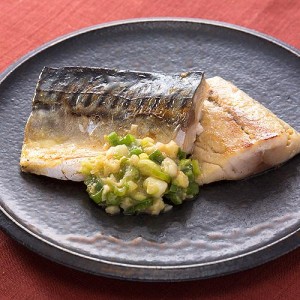June 12, 2015
Japan’s Retail Success with Innovative “Premiumized” Mackerel

Mackerel has long been a staple of Japanese home cooking; grilled, stewed or pickled, it seemed far too familiar and inexpensive to inspire much excitement among Japanese consumers, to the frustration of Japan’s retailers and the main mackerel suppliers, Japan and Norway.
To counter this, Japanese retailers and manufacturers have carefully assessed niches in the mackerel market, gotten creative and now, to the surprise of many, more expensive, value-added mackerel products have been replacing conventional products in Japanese retail over the past 3 years.
Manufacturers’ desire to develop new and higher-value mackerel products was inspired by Japan’s overall decreasing consumption of fish and the low margins on mackerel products. While fish was once a major part of the Japanese diet, younger Japanese show less enthusiasm for eating and cooking fish. This is partly due to the diversity of food choices in modern Japan as well as the perception that preparing and cooking fish is unpleasant. So prevalent is this phenomenon that there is even a Japanese term, “sakana banare” to refer to this “fish shunning”.
Profiting from conventional mackerel products was also difficult. Common, low value-added products such as salted mackerel fillets have low profit margin. Therefore, to create excitement and secure higher profits, retailers and manufacturers took on the challenge to “premiumize” one of Japan’s most common fish. What they did can be a lesson for other industries who want to turn “familiar” into “trendy”.
The successful new mackerel products can be separated into three categories – products that are 1) easy to consume, 2) easy to prepare, and 3) have new flavorings.
Easy to Consume
“Boneless mackerel” is the best example of a product that falls into the first category. Dealing with mackerel’s small bones have contributed to the recent feeling that mackerel is inconvenient to cook and eat. Boneless mackerel, with all bones removed by hand by processors, has turned out to be a hit with children – who detest picking out bones, and seniors – who fear choking on fish bones. According to Promar’s field research, most supermarkets in the Tokyo region have more than doubled their boneless mackerel sales in the past 2 years, and some have gone as far as to only sell boneless mackerel – completely eliminating the traditional bone-in mackerel.
Easy to prepare
Easy-to-prepare mackerel is a pre-cooked, vacuum-packed product that can easily be heated in a microwave or in hot water. This product is targeted towards busy working people that want to avoid the hassle of grilling fish and cleaning up after. These prepared mackerel products are sold in both supermarkets and 24-hour convenience stores – serving the needs of busy professionals that need a quick, late evening meal.
New flavorings
Flavored mackerel fillets have also greatly diversified. While most of the new mackerel fillet flavorings are familiar within Japanese cuisine, such a variety of flavored mackerel products was not seen in retail in the past. Hit products that have increased shelf space over the past two years include mackerel marinated in kombudashi (seaweed-based stock), drawn from a traditional Japanese cooking method, and also new Western cuisine-influenced products such as basil-marinated mackerel.
In the long run, with Japan’s decreasing population, consumption of mackerel and most other seafood is expected to continue to drop. To maintain profits and retain buyers’ interest, Promar expects that Japanese manufacturers will have no choice but to continue to innovate and provide value-added versions of traditional products, sometimes replacing the traditional versions. The lessons learned from mackerel’s success will no doubt be seen in many other sections of the supermarket.
Pic: Boneless mackerel is beginning to replace traditional bone-in mackerel in Japanese retail.
